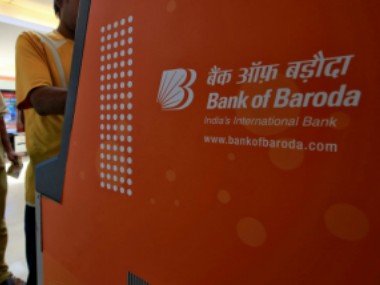Three-way merger of Bank of Baroda (BoB), Dena Bank and Vijaya, which
became effective on Monday (1 April), creates India’s second largest public sector bank and third largest commercial bank–it also creates a bank which has at least 11.5 percent non-performing assets (NPAs) as a percentage of the total advances of the combined entity. In absolute terms, the merged entity will have Gross NPAs of around Rs 75,000 crore, which when compared to its total advances of about Rs 6.5 lakh crore comes around 11.5 percent. Of the three banks, Dena got the best deal. It was anyway struggling with high bad loans, capital-shortage and governance issues. The image of a bad loan-ridden, poorly governed state-run bank repelled investors just like many other government-owned banks. Dena’s finances have slightly improved in the recent quarters though. In December quarter, the bank posted a net loss of Rs 178.47 crore as against a net loss of Rs 380 crore in the October-December period of 2017-18. Gross NPAs rose to 19.77 percent of gross advances as against 19.56 percent a year ago but net NPAs showed a decline. But, this bank continued as one of the high NPA banks in India operating under RBI’s strict scrutiny (it was under the Prompt Corrective Action (PAC) of the Reserve Bank of India on account of high bad loans and negative return on assets), till the time the unofficial bail-out package came from the government. [caption id=“attachment_4852811” align=“alignleft” width=“380”] Representational image. Reuters.[/caption] Compared to Dena, Bank of Baroda is a turnaround bank that has been improving its performance rapidly. In 2015, the government had effected certain top-level management changes in Bank of Baroda by bringing in private sector candidates and this appears to have helped its fortunes. Similarly, Vijaya Bank too is a relatively better performing bank in the PSU lot. To sum up, this is a merger of two healthy banks with one weak, capital-starved, NPA-ridden candidate and it is easy to see who stands to gain the most. The healthier duo will have to absorb the NPA shocks and capital needs of the target entity. What has happened is bundling together a couple of weak banks with a relatively well-run and strong bank. The end result will be a big drag for the stronger one (BoB) by forcing it to bail out the weaker ones. This wasn’t the idea, to begin with. Privatisation was keenly awaited. This would have facilitated more private participation and strengthening of the banking sector. But, the government chose to merge instead of selling these banks. Having said that, from a reform-perspective, consolidation among State-run banks gives the industry certain benefits. It helps to create large-sized banks that can then work to build enough muscle mass to compete in a global banking industry presently dominated by large-sized lenders. With a Rs 10 lakh crore asset size, the post-merger Bank of Baroda-Vijaya Bank-Dena Bank entity will still not be a match for the top global banks (even SBI is not big enough to be among the top banks on the global list), but India is slowly creating large-sized banks. Through a series of mergers, perhaps the country will have five or six large banks that can be groomed to compete in the global market. This makes sense now because RBI has started giving permits to a number of small banks that can focus on expanding small-scale banking activities in rural areas. In any case, it did not make sense to control the ownership of so many banks in an ambitious economy. There has been no progress on the privatisation of State-run banks which would have been the ideal case to bring in private talent and money. The IDBI Bank-LIC deal can be hardly called a privatisation move since LIC is technically a government-run entity. Thus, with not enough political will and scope for privatisation of these banks, consolidation seems to be the only way to keep the momentum going for banking sector reforms.
But the important question that will keep coming back to the government is this; do such forced mergers help to solve the NPA problem of State-run banks and end the dependency of state-run banks on the taxpayers’ money for survival? The answer is a big no. With nothing else fundamentally changing, the expected outcome of this exercise remains unclear. The work culture and management inefficiencies that led these banks to the present situation, and the onus on the government to feed capital to these banks all remain the same. Had it been a sell-off instead of a merger among PSBs, fresh private money would have come in and more efficient management would have been accountable for efficient use of that money. This is something former RBI governor Raghuram Rajan had pointed out in 2015. Rajan’s main points were that the merger of two (or more) unhealthy banks in the financial system will create an unhealthy entity that would lead to the creation of a bigger problem in the economy. If consolidation is the way ahead for the government, it will have to invest equally in a management revamp and find out-of-the-box solutions to address the NPA problem beyond the Insolvency and Bankruptcy Code resolution. If the fundamental problems are not addressed, consolidation will end up as unannounced bailout packages for zombie banks. (Data support by Kishor Kadam) (This is an updated version of an earlier published piece on Firstpost)


)

)
)
)
)
)
)
)
)



